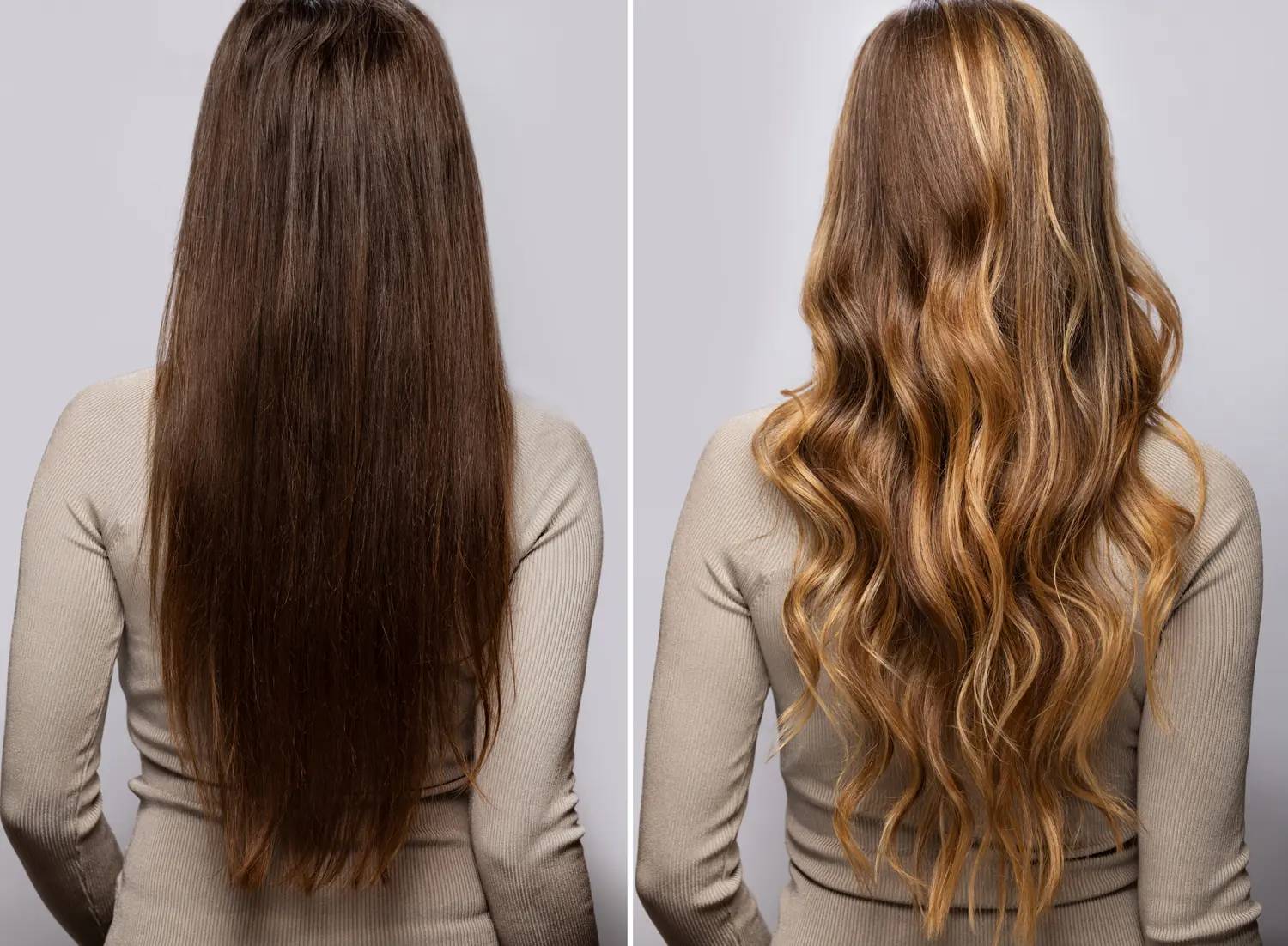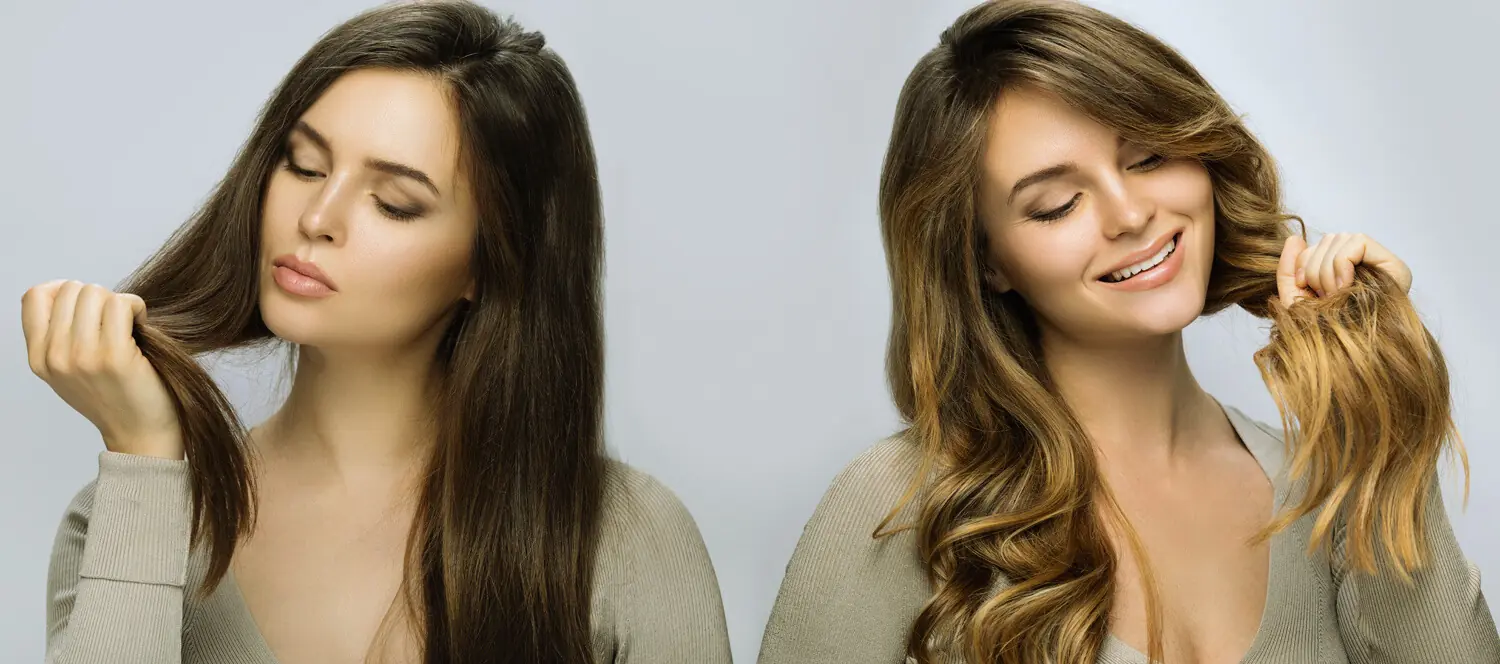Have you ever wondered why your hair suddenly changes from straight to curly or vice versa?
Many people experience this unexpected transformation at various stages of their lives, leaving them puzzled about the underlying reasons. From straight to curly hair, the journey of your hair’s texture is as intricate as the human body itself.
In this blog, I will explore the science behind hair texture changes, focusing on the roles of hormones and other influencing factors. I will also share my personal story and observations to help people on how to manage their hair evolution.
The Hormonal Rollercoaster of Hair: Understanding the Complexities
The shape of the hair and hair texture strands are significantly influenced by hormones, those essential chemicals that regulate various functions in your body. From the moment you’re born, hormones are actively shaping your hair follicles and the strands they produce. As you progress through life stages like puberty, pregnancy, and menopause, these hormonal fluctuations often lead to noticeable changes in your hair’s texture.
For some, these hormonal shifts mean an unruly mane of curl pattern during adolescence that later straightens out. For others, complex hormonal interplays can turn straight hair curly or wavy, and vice versa. Understanding this relationship between hormones and hair texture can help you embrace your hair’s natural form or work with a stylist to find a look that complements your hair’s structure.
The Science Behind Hair Shape: How Hormones Influence Texture
While genetics lays the groundwork for your hair’s shape, hormones play a surprisingly significant role in determining its final texture. Key hormones impacting hair texture include estrogen, testosterone, cortisol, and growth hormone.
Estrogen: The primary female sex hormone, estrogen encourages hair growth and can result in thicker, fuller strands. Many women experience hair texture changes during puberty, pregnancy, and menopause when estrogen levels fluctuate. Higher estrogen levels are often linked to looser and wavier curls.
Testosterone: Known as the male sex hormone but also present in women, higher testosterone levels can change the shape of hair follicles and make straight hair wavier or naturally curly. Conversely, lower levels of this hormone can result in the loosening of curl pattern.
Cortisol: Often referred to as the “stress hormone,” cortisol levels can also influence hair texture. Chronic stress or illness, which keeps cortisol elevated, can lead to temporary hair thinning or loss.
Growth Hormone: This hormone regulates the hair growth cycle, and any imbalances can contribute to changes in hair shape or density.

My Personal Story of Straight to Curly Hair
I remember the days of my childhood vividly, especially the time when I had perfectly straight hair. It wasn’t until my teenage years, around the age of twelve, that everything changed. One morning, I woke up to find my once sleek strands had transformed into a wild mix of flat lengths and curly roots. I couldn’t understand it at first; it felt like a rebellion against my old self, a challenge brought on by the hormonal shifts of puberty.
My experience isn’t unique, of course. I’ve heard similar stories from friends and other women who attribute their hair texture changes to various life events, puberty, pregnancy, menopause, and even chemotherapy. Some folks even believe that getting a perm might permanently alter their hair texture, which makes sense when you think about how those chemicals can change the structure of your hair follicles. While that awkward transition was tough, it was just another chapter in my personal hair journey.
The Hair-Do Hormones: Exploring the Impact
During significant hormonal changes such as puberty, pregnancy, and menopause, many alterations can occur in the body, including changes in hair texture. Thyroid hormones, like thyroxine and triiodothyronine, for instance, have been clinically observed to influence hair texture and volume significantly. Hypothyroidism can lead to dry, brittle hair, while hyperthyroidism might result in thinner, oilier hair.
Androgens, male sex hormones present in both genders, increase during puberty and contribute to body hair growth and, in males, balding. Increased androgen levels in females can change hair follicle shapes, transforming straight hair into naturally curly hair or vice versa. Insulin, although primarily known for regulating blood sugar, also plays a role in hair health. Studies have shown correlations between insulin resistance and androgenic alopecia (severe hair loss), indicating that metabolic health can impact hair texture and volume.
The Unpredictability of Perms
Ever heard someone say their curly hair is the result of a childhood perm? While it’s possible that the timing of hormonal changes coincided with their perm, there’s also a scientific explanation. Perms utilize chemicals like ammonium thioglycolate and hydrogen peroxide to break and reform keratin bonds in the hair, permanently altering its structure. This process can lead to lasting changes in hair texture.

Can You Manage These Changes?
Balancing hormones through lifestyle, medication, or natural therapies can help regulate hair texture and growth. Consistent and healthy lifestyle choices can make a big difference:
Reduce Stress: Chronic stress elevates cortisol levels, negatively impacting hair health. Employ relaxation techniques such as yoga, meditation, or deep breathing. Ensure adequate sleep to help manage stress.
Exercise Regularly: Physical activity improves blood circulation, bringing oxygen to hair follicles and helping to regulate hormone levels. Aim for moderate exercise most days of the week.
Eat a Healthy Diet: Nourish your body with lean proteins, healthy fats, and complex carbohydrates.Focus on whole foods like fish, nuts, seeds, leafy greens, and colorful vegetables. Avoid excessive sugar, refined carbs, and red meat, and drink plenty of water to keep your body and hair hydrated.
Use Gentle Hair Products: Opt for natural, sulphate-free shampoos, conditioners, and styling products. Harsh chemicals can disrupt your hair and hormone balance. Limit the use of heat-styling tools to prevent damage.
Embracing Change and Understanding Your Hair
Recognizing the strong interplay between hormones and hair texture can provide valuable insights into why your hair changes over time. While it may be challenging to fully control these factors, understanding them allows you to adapt your hair care routine to nurture your hair’s natural texture at each life stage.
Final Thoughts
Hair’s journey from straight to curly hair or curly to straight can be confusing yet fascinating. Influenced by genetics and significantly impacted by hormonal changes, your hair reflects the dynamic processes within your body. Embracing these changes, understanding the science behind them, and making informed lifestyle choices can help you manage your hair’s unique evolution.
So, if you find your hair taking unexpected twists and turns, know that it’s a natural reflection of your body’s journey. Love the changes, work with them, and let your hair be a testament to your unique story. Your hair, whether curly, wavy, or straight, is beautiful in all its forms, reflecting the complex and fascinating processes that make up your life’s journey. So, embrace every strand, every curl, and every wave, for they are part of what makes you uniquely you.






